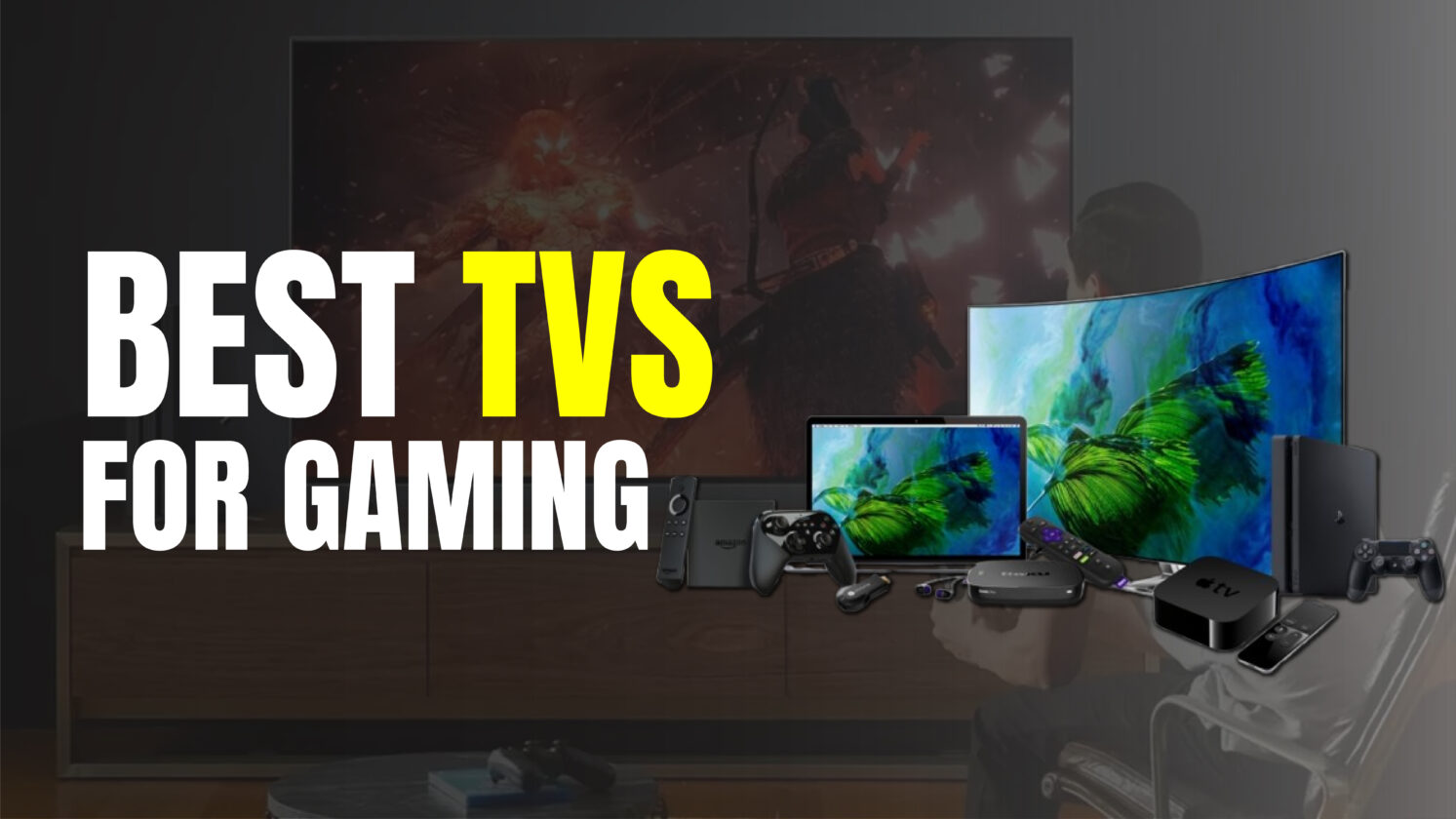Frustrated by lag messing up your kill streaks?
Your TV has a big impact on how responsive and fluid your gameplay is, regardless of whether you’re a competitive PC gamer or a casual console player. Your gaming experience can be significantly enhanced by selecting a Best TVs for Gaming that support next-generation features, reduce latency, and enhance image quality.
Based on the specifications that truly matter, such as frame rate, refresh rate, input lag, and support for HDMI 2.1, we compare the top gaming TVs of 2025 in this comprehensive guide.
1. What Is Considered an Excellent TV for Gaming?
Not all 4K televisions are designed with gamers in mind. Features that minimize input delay, eliminate motion blur, and support the newest gaming technology will give you the best experience. A real gaming TV should have clear visuals and quick performance.
Key Features to Look For:
- High Refresh Rate: For smoother motion, aim for at least 120 Hz or higher (such as 144 Hz).
•Minimal input lag: To maintain snappy controls, it should ideally be less than 10 milliseconds.
•Support for HDMI 2.1: necessary for increased bandwidth and next-generation consoles.
•Variable Refresh Rate (VRR): Assists in avoiding stuttering and screen tearing.
•AUTO Low Latency Mode (ALLM): This feature automatically transitions to Game Mode to improve reaction time.
2. The Best Gaming TV Models for 2025:
Here is a summary of some of the best gaming TVs that will be on the market in 2025, renowned for their outstanding specifications and features that cater to gamers:
- LG OLED C4: This TV, which comes in 55″ and 65″ sizes, has a refresh rate of up to 144 Hz, extremely minimal input latency (around 5 ms), and complete HDMI 2.1 compatibility. Because of its amazing OLED picture quality and quick response times, it is a favorite among gamers on both consoles and PCs.
The Samsung QN90D is a 55″ or 65″ QLED TV that supports HDMI 2.1 and VRR, has a native 120 Hz panel, and has an input lag of about 9 ms. It is well-known for its brightness and color accuracy, making it ideal for games with high HDR or gaming throughout the day.
- Sony Bravia XR A95L: This high-end 65″ OLED TV has an 8 ms input lag, a 120 Hz refresh rate, and a rich cinematic image. Despite being more expensive, it supports all next-generation features.
- TCL QM8: This 65″ Mini-LED TV has an input lag of about 6 ms and a refresh rate of 120 Hz, making it an excellent choice for gamers. Excellent value with good image quality.
- Hisense U8N: This 144 Hz TV, which comes in 55″ and 65″ sizes, has good support for HDMI 2.1, VRR, and ALLM with low input lag (~5 ms). Perfect for budget-conscious PC and console gamers.
3. The Significance of Frame Rate and Refresh Rate:
The number of frames your TV can display in a second is known as the refresh rate. Smoother, more fluid gameplay is achieved with a faster refresh rate, such as 120 Hz or 144 Hz, particularly in fast-paced scenarios like those seen in racing, shooter, and sports games.
A 120 Hz+ TV maximizes the performance of your hardware, minimizing motion blur and screen tearing when playing on a high-end PC, PS5, or Xbox Series X.
4. Recognizing Latency and Input Lag:
The time it takes for an action to appear on the screen after you press a button on your controller is known as input lag. This can determine whether a player wins or loses, particularly in competitive games.
Input lag on the top gaming TVs of 2025 is kept to less than 10 ms. You may further minimize lag by turning on Game Mode on your television.
Pro Tip:
Always confirm input lag performance using trustworthy testing resources, such as RTINGS.com, which offers dependable real-world figures.
5. HDMI 2.1, VRR, and ALLM: Essential Information for Gamers
Your TV must support cutting-edge connectivity features like HDMI 2.1 if you want to get the most out of your next-generation gaming PC or console. Higher bandwidth is made possible by this, allowing for fluid 4K gameplay at 120 Hz or higher.
Essential Features:
- HDMI 2.1: Allows for more sophisticated gaming features and higher frame rates.
• Variable Refresh Rate (VRR): Minimizes screen tearing and stuttering when frame rates fluctuate.
• AUTO Low Latency Mode (ALLM): This feature instantly switches on Game Mode to improve input response time.
• eARC: Perfect for uncompressed audio when using a high-end soundbar.
6. Top TVs For Games (PC, Xbox Series X, PS5)
1. For PS5:
With its cinematic images and buttery-smooth 4K gaming at 120 Hz, the LG OLED C4 is a great complement. It is perfect for both competitive and story-driven games because of its flawless blacks and low input lag.
2. For Xbox Series X:
The Samsung QN90D is a good option for Xbox players who want to optimize performance and color fidelity because of its Dolby Vision Gaming support and FreeSync compatibility.
3. For PC Gaming:
With low input lag and support for 144 Hz refresh rates, the Hisense U8N and TCL QM8 both offer excellent value. These models are ideal for desktop or living room setups since they provide excellent performance without breaking the bank.
Conclusion:
In 2025, there are more factors to consider than screen size or resolution when selecting a gaming TV. Pay attention to performance-oriented features like refresh rate, input lag, and next-generation compatibility if you want a genuinely immersive and competitive experience.
There is a perfect TV out there to fit your style, whether you want ultra-fast response times on your PC or a cinematic experience on your PS5. Do your homework, make sure your cables and settings are tuned for optimal performance, and match your TV to your platform.


